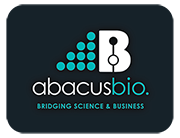The Australian Wagyu Association (AWA) has implemented the Wagyu Breeder-Feeder Index (BFI). This is a new, balanced selection index, to assist Wagyu breeders to select the most profitable animals in a self-replacing herd, whilst better managing birth weight, milk production, and mature cow weight.BFI BENEFITSThe Breeder-Feeder Index:
- Promotes a high growth response, especially for post-weaning gain/Carcase Weight;
- Reduces the number of high ranking extreme high and low Birth Weight EBV sires;
- Delivers positive emphasis for Milk and Scrotal Size;
- Applies a slight negative emphasis on high Mature Cow Weight while strongly positively emphasising Carcase Weight; whilst also
- Providing a high selection response for Marble Score.
 AbacusBio Index developmentAs part of continual improvement in AWA’s genetic selection tools, the AWA conducted a survey of genetic service providers in 2022 to identify leading global external expertise to complement AWA’s service delivery and genetic solution provision for members. AbacusBio was chosen as the leading developer of Selection Indexes. Over a 9-month period in 2023, AbacusBio conducted a project for the AWA to develop a new Self Replacing Index that delivers significant improvements over currently available indexes for Wagyu including:
AbacusBio Index developmentAs part of continual improvement in AWA’s genetic selection tools, the AWA conducted a survey of genetic service providers in 2022 to identify leading global external expertise to complement AWA’s service delivery and genetic solution provision for members. AbacusBio was chosen as the leading developer of Selection Indexes. Over a 9-month period in 2023, AbacusBio conducted a project for the AWA to develop a new Self Replacing Index that delivers significant improvements over currently available indexes for Wagyu including:
- Recognising an intermediate Birth Weight EBV optimum; by penalising low and high birth weights, recognising the economic impact of calving difficulties in high birth weight animals and reduced calf survival in low birth weight animals.
- Rewarding positive Milk and penalising negative Milk EBVs; by placing an economic weighting on improved calf survival and early life growth as a result of positive Milk, whilst placing a negative economic weighting on reduced calf survival and poor early life growth as a result of negative Milk.
- Rewarding positive Carcase Weight whist maintaining moderate Mature Cow Weight, through recognising the economic cost of maintaining high Mature Cow Weights relative to the economic benefit of high Carcase Weight of progeny.
- Placing direct emphasis on the Carcase Weight trait itself as opposed to using traits correlated to Carcase Weight as used in prior Self Replacing Indexes.
- Applying positive pressure on Scrotal Size (as the only trait correlated to female fertility) as opposed to negative pressure as per the prior Self Replacing Indexes.
Timing and future Index changesThe AWA will publish the new Breeder-Feeder Index (BFI) alongside its existing Indexes, replacing the current Wagyu Breeder Index. AWA has also contracted AbacusBio to develop new Fullblood Terminal and F1 Terminal Indexes using the same Index model logic used for the Breeder-Feeder Index. Once the AbacusBio Fullblood Terminal and F1 Terminal Indexes are complete (estimated October 2024), the AWA will only publish the three AbacusBio Indexes and the current Self Replacing Index as follows:
- AbacusBio Breeder-Feeder Index (BFI): A self-replacing herd profitability index
- AbacusBio Fullblood Terminal Index (FTI): A Terminal Index for Fullblood slaughter animal production
- AbacusBio F1 Terminal Index (F1TI): A Terminal Index for F1 slaughter animal production
- Breed Object Self Replacing Index (SRI)
Similarity between SRI and BFI
In general terms, animals that rank highly on the prior SRI, also tend to rank highly on the new Breeder-Feeder Index. An analysis of 374 high-accuracy sires registered with the AWA shows a correlation of 0.78.
This means some re-ranking of animals will occur between the Breeder-Feeder Index and the prior SRI. Of the top 50 high-accuracy sires ranked on SRI values, 40 of these still rank in the top 50 of the Breeder-Feeder Index.
Significant differences in ranking between the SRI and Breeder Feeder Index result from economic value changes in animals that have extreme Birth Weight, Milk, and Mature Cow Weight EBVs.
Download our FACT SHEET (PDF) for more information
BFI launch and and information webinar
The Breeder-Feeder Index is now displayed as the fourth Selection Index in the Indexes area on the web, replacing the Wagyu Breeder Index. It was published on Monday 26 February 2024.
Hosted by Australian Wagyu Association and AbacusBio, a webinar with all the information was held on Thursday 29 February 2024 at 1pm (AEDT).
Watch it below or via this link WATCH NOW
